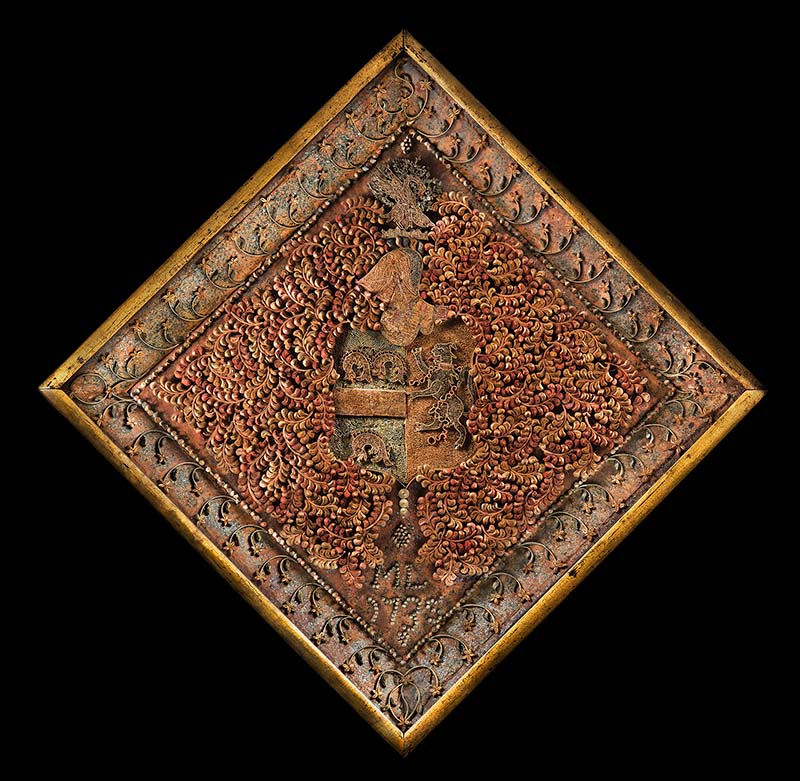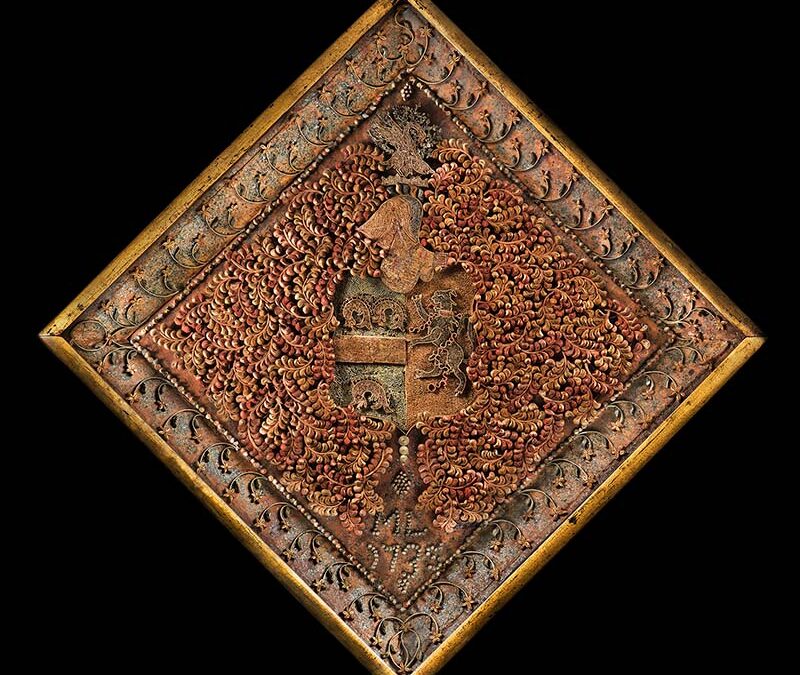Hatchment

| Maker | Mary Lemmon |
| Date of Creation | 1735 |
| Location | Boston, Massachusetts |
| Materials | Red, blue, and gold rolled paperwork, paper, gold leaf, mica, gilt pine frame, replaced glass |
| Institution | New England Historic Genealogical Society |
| Credit Line | Gift of Mrs. Frank M. Clark, 1940; restored through a gift from Mrs. Gregg Ring, 2003 |
| Accession Number | R0008 |
| Photo Credit | Courtesy New England Historic Genealogical Society Fine Art Collection |
The Lemmon-Phillips filigree hatchment is an extraordinary and early example of a lost Colonial art that is closely associated with Boston. Created by Mary Lemmon (1717–98), a Charlestown schoolgirl, the quillwork shows the arms of her parents’ families (she was the daughter of Joseph Lemmon and Elizabeth Phillips). A few years after this was made, Mary married the merchant Joseph Lynde of Charlestown and had 17 children. They resided in the Lynde’s Point area (the future location of the Charles Bulfinch-designed Charlestown Prison) and moved to Worcester after their Charlestown house was caught in the crossfire of the Battle of Bunker Hill in 1775. Wealthy Boston-area families had a taste for coats of arms and other pictorial compositions rendered in filigree. Only a handful of the two dozen or so that survive are in the form, like this example, of a diamond-shaped hatchment. Here, on the dexter, or right side, Mary worked the Phillips arms, featuring a lion rampant with chains. On the left, or sinister, side, she placed the Lemmon arms, with three dolphins. At the top, she included a pelican in her piety (a heraldic reference to self-sacrifice, perhaps foreshadowing her married life), and she added her initials and date at the bottom. Quillwork (as it applies to this object, as opposed to Native American porcupine quillwork) is an ancient craft that is the art of curling small strips of paper into intricate, coiled designs, and arranging them into boxes or frames with other materials to create decorative sconces, hatchments, and pictures. The term “quillwork” comes from the fact that the shaft of a goose quill or feather may have been used to roll the strips of paper. Metal filigree was first popular in ancient times, and by the 18th century, paper was used to make these intricate objects, usually highlighted with mica that sparkled in candlelight.

